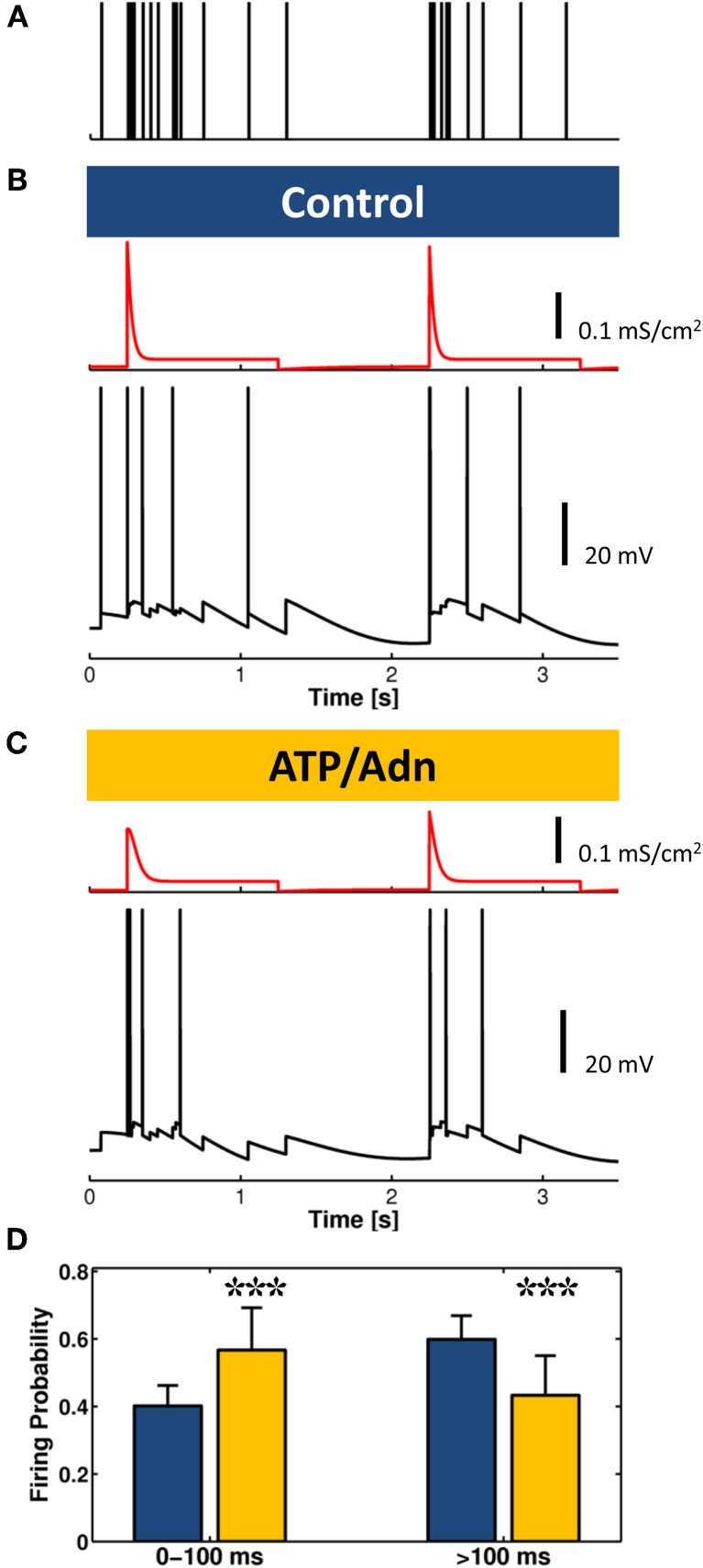Figure 4.
Weakening of synaptic transmission by astrocyte-derived ATP and adenosine could promote bursting at the onset of the UP state. (A) A stereotypical synaptic input alternating a phase of intense presynaptic firing to a relative quiescent phase, reminiscent of UP and DOWN states, respectively, is fed into a model of cortical neuron. (B) In control conditions, for low extracellular levels of ATP/adenosine (Adn), synaptic release probability is high, and the average synaptic conductance (red traces) is shaped by short-term depression while neuron fires (black trace) at sustained rate during the UP state. (C) For increased levels of ATP/Adn, the firing rate dramatically decreases due to the upstream reduction of these purines of synaptic release probability, but as shown in the histogram in (D), due to the modulation of the synaptic filtering characteristics by increased extracellular ATP/Adn concentration, the neuron fires a burst of actions potentials at the onset of UP states at higher frequency than in (B) in control conditions (n = 100; Bar + Error bar: Mean + STD; χ2 test, p < 0.001). Synaptic release and ATP/Adn modulation of it were modeled as in panel 4A in De Pittà et al. (2011). Postsynaptic currents were computed as the product of postsynaptic conductance and membrane voltage. Each input spike contributed to a change of postsynaptic conductance proportional to the amount of synaptically-released resources by a α-function such as α (t) = gmax · exp(1 − t/τ) · t/τ (Ermentrout and Terman, 2010) with gmax = 500 mS/cm2 and τ = 20 ms. The postsynaptic neuron was modeled as a regular spiking (RS) neuron according to (Destexhe, 2009).

